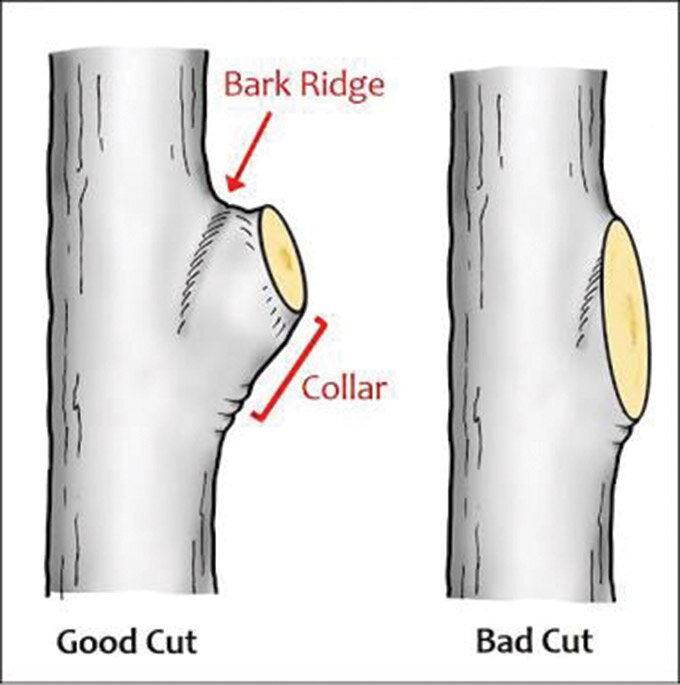TREE PRUNING SOUTH AFRICA: HOW TO PRUNE YOUR TREES THE RIGHT WAY
Master the art of pruning your trees using this simple guide by SA Forestry Online.
Making the cut just in front of the branch collar.
The second in the series of tree trips by Julian Ortlepp of TreeWorks, brought to you by Husqvarna South Africa.
Landscape trees require proper pruning and care to maintain their structural integrity and good looks. When pruning is done poorly, it may affect the tree's long-term health or even make it unsafe. Always use a professional contractor with proper knowledge to prune your trees.
Why we prune trees
All pruning must be done with a reason, as every cut may change the tree's growth. Trees are pruned mostly to assist with development, to remove dead and diseased wood and to make them safer for all who walk and live below them. It also assists with light and air penetration into the crowns and on to areas below them.
A crossing and rubbing branch, should be removed.
Techniques used when pruning
Trees are cleaned to remove dead and diseased wood. Crownlifting is done to lift the low-hanging branches of the tree's "skirt" to clear roads, buildings or to allow more light into the area below. We thin trees to create an even, well-balanced crown that allows more light into the surrounding area, whether it be a house or for gardening purposes.
Crown reduction pruning reduces the size of a tree's crown when a tree has become too big for a property. Topping a tree is when the whole crown is cut off and only stumps remain: this is detrimental to trees and should never be done. Topping is NOT the same as pollarding.
Specific pruning for young trees
Pruning young trees can be compared to teaching children manners. If you don't get it right, in the beginning, you have problems later in life. Trees pruned from a young age will grow into stronger, more structurally sound 'adults' that will probably require less pruning as they grow older. It is important to maintain a single 'central leader', which is the tip of the tree and is crucial in maintaining the tree's typical shape. Smaller branches growing in between the main scaffold branches should be removed to 'unclutter' the crown. Any 'water shoots' that grow on the stem or main branches should be removed as they interfere with the structure and will suck moisture out of the tree.
A photo showing the branch collar or branch bark ridge.
Tips for pruning:
Never cut behind the branch collar;
Do not paint the cut with a sealant;
Always use sharp cutting tools to prevent cracking and tearing at point of cut;
When pruning a branch, push it forward gently with your free hand while cutting with the other. This takes pressure off your hands and reduces strain on the wrist;
Never remove the central leader (highest tip on centre of tree);
If in doubt, rather consult a professional arborist.
This is the second in a series of tree tips brought to you by Husqvarna South Africa, a world-leading producer of outdoor power products for garden and forest care. For more information see www.husqvarna.co.za or visit their facebook page.
Julian Ortlepp: www.treeworks.co.za or follow him on facebook: TreeWorksJHB.
*First published in SA Forestry magazine, June 2017. Source





